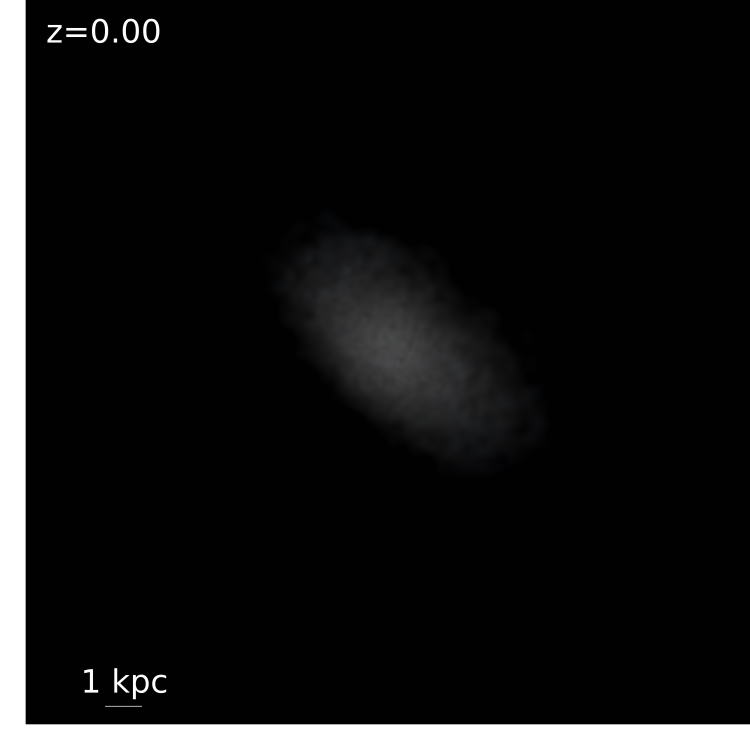Ultra diffuse galaxies (UDGs) have very low surface brightness, comparable to dwarf galaxies, and extended stellar distributions, with sizes similar to the Milky Way!
There are two populations of UDGs:
- Red UDGs: exist only around galaxy clusters; metal poor but with extreme old stars, so their colors are red;
- Blue UDGs: exist in the field and galaxy groups; gas rich and star forming, so they are relatively blue;
We propose that stellar feedback and early quenching can produce the Red UDGs closed to a galaxy cluster.
Stellar Feedback: expands the stellar distribution and reduces its surface brightness by repeated episodes of supernovae explosions and gas removals (same mechanism for dark matter halo core formation);
Early quenching by galaxy clusters: extremely old yet metal poor stars with red color;
Blue UDGs can be produced with Stellar Feedback alone in the field or galaxy groups and reach low surface brightness, but they appear blue due to young stars.
An ultra diffuse galaxy in the FIRE simulation (which was artificially quenched and its gas was stripped away at z=0.2):

According to this formation scenario, red UDGs do not have an over-massive dark matter halo, but instead, they have normal stellar to halo mass ratio (just as local field dwarf galaxies), but they have concentrated DM halos and large numbers of globular clusters due to the early infall into a galaxy cluster. For details, see the talk (UDG_tkc_lorentzworkshop) I gave in the Lorentz workshop in Leiden (the Bewildering Nature of Ultra-diffuse Galaxies).
Slides are available: Tsang_Keung_Chan_UDG_ucsc2017
Here is a link to our paper on ArXiv.
The paper is published on MNRAS.